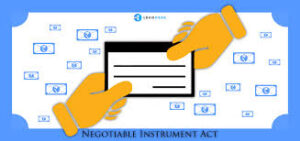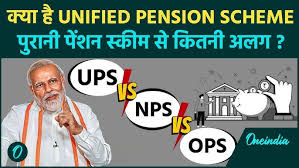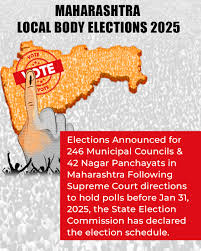

A cheque is a paper that you can give to your bank and tell them to pay the person whose name is on the Cheque the amount of money that is written on it.
There is another name for Cheques: tradable instruments. A negotiable instrument is a piece of paper that offers the bearer a certain amount of money either when the bearer shows the paper to the banker or by a certain date.
We have different types of current/Cheque accounts, fixed deposits, and savings accounts to meet your specific banking needs.
The person or organization that writes the Cheque is called the drawer, and the person or organization that it is made out to is called the drawee.
Definition of Cheque
A cheque is a physical document that instructs the bank to conduct a money transfer from the account of the shipper to another account. It is issued to the holder of a current or savings account in order to facilitate money transfers inside and outside the bank. A cheque is a prevalent method of small business and merchant money transfers.
The Negotiable Instruments Act of 1881 applies to Cheques as negotiable instruments. A cheque transaction involves the participation of three individuals or entities: the drawee, the beneficiary or payee, and the drawee. The drawer affixes the beneficiary’s name to the Cheque and instructs the bank to transmit the specified amount from their account to the beneficiary’s account. Cheque deposits are deposited into the institutions’ drawers.
Define a cheque.
A cheque is a document or sheet of paper that instructs the bank to transmit funds from one account of a person or organization to another.
“Drawer” refers to the individual who writes the Cheque, while “payee” refers to the individual in whose name the Cheque has been issued. A cheque specifies the quantity of money to be transmitted, the name of the payee, the date, and the signature of the issuer.
There exist several key considerations pertaining to cheques, which are delineated as follows:
- Cheques are exclusively payable in favor of current or savings bank accounts.
- A Cheque lacking a date shall be deemed null and void.
- Cheques can only be cashed by the payee, who is the designated recipient.
- Cheques are only effective for three months from the date of issuance.
- The cheque includes an indication of a nine-digit MICR (Magnetic Ink Character Recognition) code. This simplifies the process for financial institutions to approve Cheques.
A comprehensive analysis of each category of Cheque is provided below, aiding candidates in their preparation for forthcoming government examinations.
- TYPES OF CHEQUE
- Bearer Cheque
One type of Cheque is a bearer Cheque, which means that the person holding it can cash it. In other words, the person who brings the Cheque to the bank has the power to ask the bank to cash it.
It is possible to get cash with this kind of Cheque. You can sign this type of Cheque. The person holding the Cheque doesn’t need to show any kind of ID.
For example: Deepak (the drawer) has signed a Cheque, and Varun is the person who will receive the money. For the Cheque to be cashed, Varun can either go to the bank himself or send someone else. There will be no need to show ID to bearer’s name.
Bearer Cheque: The “OR BEARER” choice on a Cheque can be crossed out if the person does not want it to be accept as payment.
- Order Cheque
Because this kind of Cheque can’t be signed by anyone else, the person whose name is on the Cheque is the only one who can cash it. As written on the Cheque, the drawer must strike the “OR BEARER” mark so that the Cheque can only be paid by the receiver.
To Give You an Example: If Deepak signs a Cheque, then only the person who is supposed to get the money can go to the bank and cash it.
Order Cheques: Before cashing the Cheque, the bank may Check to make sure the client is who they say they are.
- Cheque that has been crossed (Crossed Cheque)
If you have this kind of Cheque, you can’t get cash. The money can only be moved from the account of the drawer to the account of the receiver. The Cheque can be turned in by anyone at the bank.
If there is a crossed Cheque, the person who is drawing it must make two lines in the upper left corner.
- Account Payee Cheque
This is the same as an account user Cheque, but it doesn’t need a third party to work. The money will be sent straight to the account number of the payee.
Two lines are written on the top left area of the Cheque that say “A/C PAYEE” to make sure it is an account payee Cheque.
- Old Cheque (Stale)
Any Indian Cheque is only good for three months from the date it was issued. People who are supposed to get money from a Cheque that was signed three months ago will be told that the Cheque is “stale.”
For example, if the receiver goes to the bank on May 1, 2021, to cash a Cheque that is due January 1, 2021, the request will be turned down, and the Cheque will be considered old.
- Post-dated cheque
A post-dated check can be written if the person who writes it wants the payee to get the money after the current date.
A drawer might write May 10, 2021 on the check, but he or she wants the payment to be made later, so they could write May 30, 2021 on the check. This check has a date that has already passed.
- Ante Dated Cheque
An “ante dated” Cheque is one on which the drawer writes a date before the present date.
Let’s say the date on the Cheque is January 1, 2021, even though it’s now January 30, 2021. It will be seen as a Cheque with an early date.
- Cheque for Yourself (Self Cheque)
If the drawer wants cash for himself, he can write “SELF” on the Cheque instead of the Payee’s name and cash it at the bank where he has an account.
For example: If someone needs Rs.1,00,000/- in cash, he can write a self-Cheque, take it to the bank office where he has an account, and get cash instead of a Cheque.
- Traveler’s Cheque
As its name suggests, the Traveler’s check can be used when going to a country that doesn’t accept Indian rupees as money.
When someone goes on vacation abroad, they can bring a traveler’s check with them and cash it in another country.
- Mutilated Cheque (Changed/damaged)
It is called a “mutilated cheque” if a check gets to the bank split up. If the check is torn into more than two pieces and the important information is pulled off, the bank will not accept it and say it is invalid until the person who wrote it confirms it is valid.
The bank may handle the Cheque further if it is torn at the corners but still has all of its important information on it.
- Blank Cheque
A “blank Cheque” is a Cheque that only has the drawer’s name on it and no other information written on it.
In the Indian banking business, the above types of Cheques are the most popular and are used often. Now, let’s talk about the people who are linked to a Cheque.
- TYPES OF CROSSING OF CHEQUES
- Crossing in a general sense/General crossing
A general crossing cheque is a kind of Cheque that is marked with two parallel transverse lines across the cheque or on the
As per Section 123 of the Negotiable Instruments Act, 1881, the top left corner of the cheque should include either the words ‘and Co.’ or ‘not negotiable’ between them.
- Exclusive Crossing/Special crossing
A special crossing cheque is a kind of Cheque that has the banker’s name across it, either with or without the term ‘not negotiable,’ as specified in Section 124 of the Negotiable Instruments Act, 1881.
- Non-negotiable crossing/Unalterable Crossing
By adding the term ‘not-negotiable’ to a crossed Cheque, it is transformed into a non-negotiable cheque as stated in Section 130 of the Negotiable Instruments Act, 1881. This implies that the recipient will not have the ability to provide a higher level of ownership than the original sender, even if the Cheque is subsequently transferred.
An exception the holder in due course is unable to bring a lawsuit against this individual owing to the fact that they own a superior and valid title.
- Account Payee Crossing/ Restrictive Crossing
Account Payee Crossing, also known as Restrictive Crossing, is a banking practice that involves marking a Cheque with specific instructions to ensure that it may only be deposited into the account of the person named as the payee.
An Account Payee crossing is a kind of special crossing that serves to prohibit the redemption of a Cheque. A Cheque is crossed by placing the words ‘account payee’ between parallel lines, indicating that it may only be deposited into the account of the named payee. (established by customary commercial practices and not explicitly stated in the legislation).






